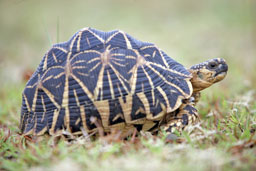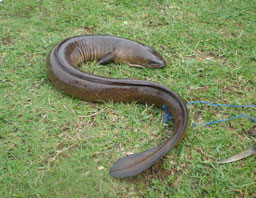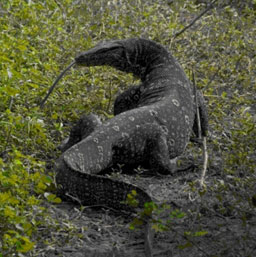Wasgamuwa & Angamedilla Nat’l Parks
View from the primordial swamps

Photo: Barney Wilczak
Reptiles
A surviving remnant of the Mesozoic age, the huge (2 m long) and colorful water monitor (Veranus salvator) might startle you as it “explodes” from its lair, crashing through the forest underbrush in a bid to escape your intrusion.

Photo: David Barron
Other reptiles that are commonly observed includes:
- land monitor, the beautiful star tortoise, black turtles, green forest lizard, garden lizard, painted lipped lizard; skinks (tree, common, and rock), and geckos.
- Of the snakes, the following are common: green vine snake, brown vine snake, cat snake, green keel back, kukri snakes, rat Snake and python.
- Poisonous snakes like Russell’s viper and cobra are rarely encountered.
- Crocodiles are more easily seen in a nearby national park.
- A check-list of reptiles native to the dry zone is available on request at the site.
Amphibians
Echoes from the Permian Age lull you to sleep.
The ever present evening visitor, the rusty colored toad (Bufo malanosticus) comes in search of insects, or mates, under our camp lights. And the wood frog (Rana gracilis) favors our leaky plumbing. During the rainy season the entire community of frogs emerges as each of the dozen or so species serenades its mates, raising a loud symphony of competing love calls chorusing through the night – echoes from the Permian Age to lull you to sleep.
Fish
 Our research station neighbors a fishing village from which we obtain our fish for eating (mostlyTilapia mossambica). The fishermen bring in a variety of both native and introduced species. Ten of the 33 fresh water fish in our area can be seen, including the large carp (Catla catla) and eel (Anguillasp).
Our research station neighbors a fishing village from which we obtain our fish for eating (mostlyTilapia mossambica). The fishermen bring in a variety of both native and introduced species. Ten of the 33 fresh water fish in our area can be seen, including the large carp (Catla catla) and eel (Anguillasp).

